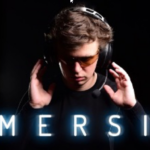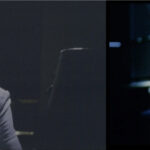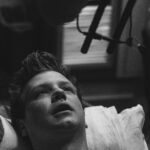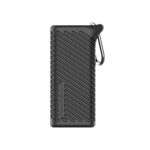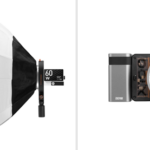The independent feature film “Too Much Life” was posted end to end in DaVinci Resolve Studio editing, color grading, visual effects (VFX) and audio post production software, with Blackmagic Cloud Pod network storage solution and DaVinci Resolve Mini Panel also supporting the workflow. Produced by Kauai Made Films, which is helmed by Producers Elliot Lucas and Sawyer Woods, the film featured the work of more than 250 students from preproduction to picture lock via The Kauai Film Academy.
In the film, Harper Hudson’s (Katelyn Lopes) seemingly perfect life is turned upside down when her closest friend challenges her in their school’s upcoming presidential elections. As the most popular girl at Garden Island School, Harper is used to constant adoration from fellow students, but she must learn that friendship is more important than success in life.
“Kauai has a rich movie history, but it’s a destination shooting location, with bigger projects coming fewer and farther in between. To have a career in filmmaking, we have to make these projects ourselves, which is why we established Kauai Made Films as the production arm, and The Kauai Film Academy to create the workforce via filmmaking education, effectively growing the filmmaking community on Kauai,” said Lucas.
He continued, “One factor that has allowed all this to happen, Kauai Made Films, the academy, etc., is the rapid advancement and increased affordability of filmmaking technology. I can use the same grading tools used by Hollywood blockbusters. For example. I’ve been using DaVinci Resolve for more than 10 years, and as it has developed, with the addition of editing, VFX, audio, so has my workflow.”
Lucas noted that in shooting the film over the course of two years, the team was able to take advantage of the updates being added to DaVinci Resolve Studio on a regular basis. “The new features added every year to Resolve, Fusion, Fairlight, the plugins and tools changed the way we did post on this one film,” Lucas noted. “Resolve doesn’t just make our workflow faster; it makes our work better.
“For example, there’s a scene with Harper on a surfboard at night, and we shot the scene over two weeks, so the skies and weather were changing. All the tracking and trying to get the shots the same were proving difficult in another program until I thought to try out Resolve’s new (at the time) sky replacement tool. Immediately the speed and precision of the tracking was so much better. Something that we were originally going to let go, as it wasn’t worth the time to fix in the other program, ended up being something that we could not only do in Resolve but also that perfected the scene.”
Lucas also cited DaVinci Resolve Studio’s multitude of post disciplines within the single software application as essential to the film’s post workflow.
“The film has water scenes, a festival, a golf cart crashing into a tree, debates, people on walkie talkies, effects, foley etc., and the sound design is complex,” he noted. “We originally intended to send it out for mixing and mastering, but that went out the window when the premiere date was set as we didn’t have the time. Luckily, we could turn to the Fairlight page in Resolve, and we relied on the effects and EQing, learning sound design, mixing, clean up and ADR as we went along.”
According to Lucas, capitalizing on the power of ADR was especially transformational for the film. “With ADR, we could change lines when the actors weren’t in the shot and use shots that we didn’t think we could originally. Having that flexibility to manipulate the story and constantly be evolving the edit was powerful and was supported by Resolve’s integrated toolset,” he said.
“This film was truly transformed in post,” added Lucas. “Because Resolve integrates editing, color, VFX and audio, and all the tools are right there, it changed the way we posted the film for the better. Before, you would lock the edit and then move to color, having to jump to another program. But color, VFX and audio affected our edit. A shot we might have originally neglected because we didn’t have the time to jump between applications, instead we were able to save by quickly jumping into the color page or the Fusion page, making tweaks and turning it into something usable.”
He concluded, “In the end, we were able to get the most out of what we had rather than lock something in that might be just OK. We were equipped with the tools and the speed to see the full potential of ‘Too Much Life.’”



